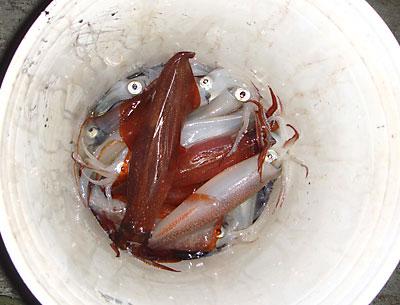Seasons by the Sea: Treats From the Sea

There are a couple of springtime treats in our waters right now, often only available in spring and fall as the water temperature changes. Weakfish, also known as sea trout and by their Native American name “squeateague,” are a delicious, delicate, finely textured fish. Due to their delicacy, they must be consumed when “fresh, fresh, fresh” as Mrs. Condie Lamb instructed in the 1965 L.V.I.S. Cookbook. The name weakfish is misleading, as they are feisty fighters. But due to the weakness of their mouths, hooks often rip loose just as they are caught, allowing the fish to escape.
The weakfish is a member of the drum family, which includes spotted sea trout, croaker, and spot. All of these fish have the ability to make a drumming sound (audible to boaters), by contracting their abdominal muscles against a resonating air bladder. It is not known what the drumming means, but only the males do it, and they are particularly loud during spawning time, so you can draw your own conclusions.
In the years just after World War II, massive schools of weakfish were abundant along eastern Long Island from late April to July. They virtually disappeared in the 1950s, and then gradually started to recover in the early 1970s. No other fish have such extreme highs and lows in abundance. Weakfish are excellent broiled, fried, grilled, and stuffed and baked.
Blowfish, or North Atlantic puffers, are one of our most delicious seasonal treats. As their availability in spring and fall is pretty unreliable you seldom see them on a restaurant menu. But you have a good chance of finding them at the Seafood Shop, Stuart’s, or any other reliable fish market. It is surprising how few people have even tasted blowfish, still believing they must be related to the other members of the Tetraodontidae family, like the Japanese fugu.
Cleaned blowfish look kind of like chicken drumsticks. They have a single bone running between two tasty morsels of flesh. Blowfish are easy to cook, mild in flavor, and comical to look at, which I think makes them an ideal introductory fish for young children. They are best quickly sautéed or fried. You could include them in soups or stews but this is kind of a waste of a fleeting treat. They’re also a bit too small and delicate to bake.
Squid, our local cephalopod, is inexpensive, nutritious, and delicious. Squid, cuttlefish, and octopus are the most advanced of the mollusks. The name cephalopod is from the Greek for “head foot” because the foot muscle is near the head.
Buying squid whole is exceptionally cheap, and yields up to 70 percent edible flesh, 18 percent of which is protein. Squid has an unnecessary reputation for being difficult to cook. Here’s all you need to remember: Cook either no more than 2 minutes, or no less than 30. These cooking methods produce two completely different textures. Because squid has very dense flesh reinforced with multiple layers of collagen, it is almost like meat. Cooked quickly, squid is moist and almost crisp. Cooking gently for an hour or more produces a flesh with silken succulence.
As the explanation for cleaning squid is somewhat detailed, I will leave it out. You can either buy it cleaned (like squeamish me), or find directions in any good seafood cookbook. Our first recipe is for the Star editor, David E. Rattray’s, fresh squid with rosemary and balsamic vinegar. He likes skin-on squid.
Click for recipes
